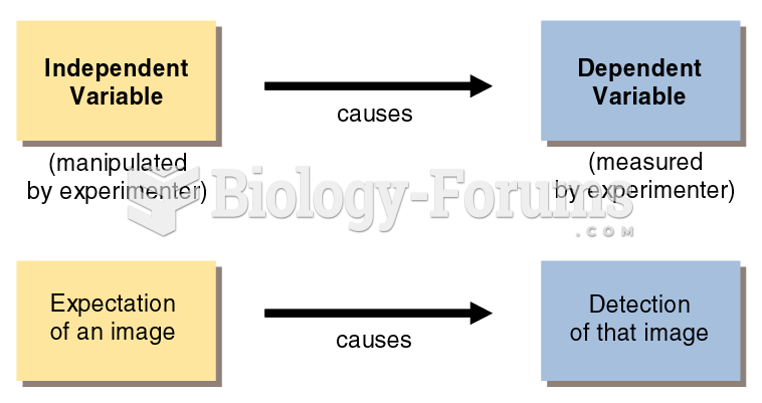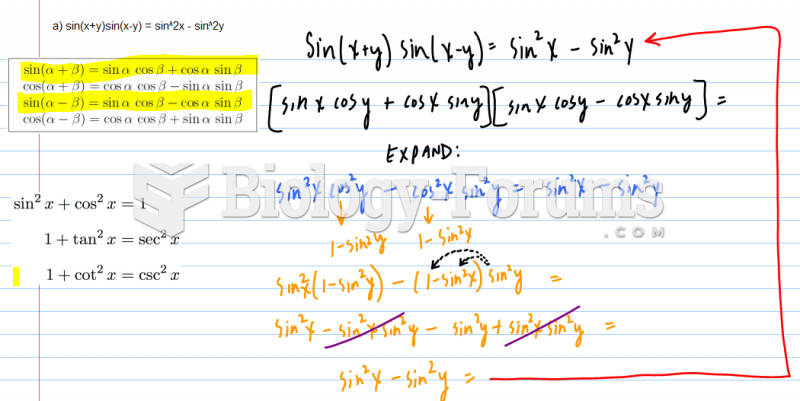|
|
|
Signs and symptoms that may signify an eye tumor include general blurred vision, bulging eye(s), double vision, a sensation of a foreign body in the eye(s), iris defects, limited ability to move the eyelid(s), limited ability to move the eye(s), pain or discomfort in or around the eyes or eyelids, red or pink eyes, white or cloud spots on the eye(s), colored spots on the eyelid(s), swelling around the eyes, swollen eyelid(s), and general vision loss.
The average office desk has 400 times more bacteria on it than a toilet.
More than 30% of American adults, and about 12% of children utilize health care approaches that were developed outside of conventional medicine.
The average human gut is home to perhaps 500 to 1,000 different species of bacteria.
Between 1999 and 2012, American adults with high total cholesterol decreased from 18.3% to 12.9%







